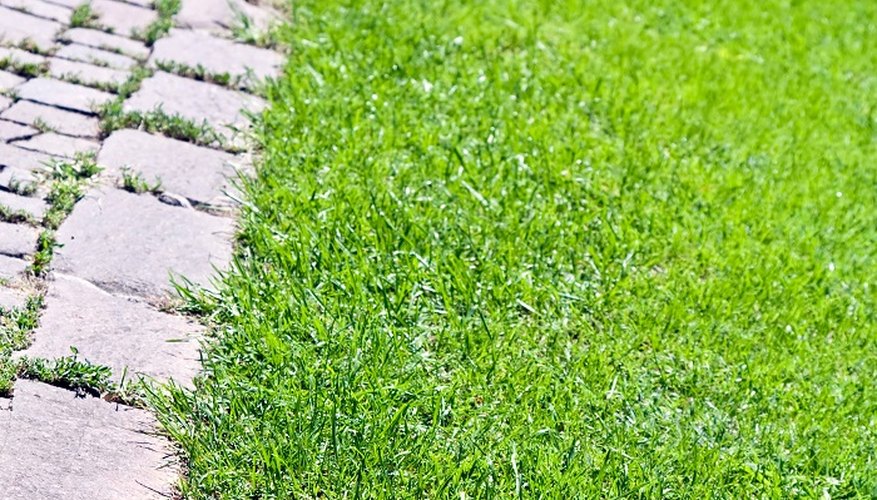Brick edging breaks the monotony of the landscape and gives your lawn a manicured appearance. Edging separates a lawn from the surrounding path or patio and prevents weeds from growing there. Although edging comes in a variety of materials -- including wood, stone, rock, metal, fibreglass and concrete -- brick is often used because it is inexpensive, versatile, durable and blends well in any setting. Brick comes in a variety of shades, allowing homeowners to select one that complements the exterior of their house.
- Brick edging breaks the monotony of the landscape and gives your lawn a manicured appearance.
- Edging separates a lawn from the surrounding path or patio and prevents weeds from growing there.
Stretch a garden hose or spread powdered chalk in a straight line along the area you want to edge. Measure the line to determine the number of bricks needed for the length and desired width of the edging. Standard paver bricks measure 20 cm long and 10 cm wide.
Dig a trench 10 cm to 15 cm deep, and your desired width, over the line you made, using a shovel. Collect the dirt in a wheelbarrow as you dig. Level the base of the trench with a trowel to provide a secure footing for the bricks.
Line the base of the trench with landscape weed barrier fabric, which maintains the edging longer. Cut it with a utility knife so it covers the base and sides of the trench.
- Dig a trench 10 cm to 15 cm deep, and your desired width, over the line you made, using a shovel.
- Line the base of the trench with landscape weed barrier fabric, which maintains the edging longer.
Spread a 5 cm thick layer of sand or crushed rock gravel over the trench base to assist drainage, provide a strong footing for the edging and reduce frost damage to the bricks. Smooth the top of the sand or gravel with a trowel so it is even.
Place a brick at a corner of the trench to determine whether height adjustments are necessary. The top of the brick should not lay no more than 1 cm to 2.5 cm above soil level. Remove or add sand or gravel in the trench to achieve the required brick height.
- Place a brick at a corner of the trench to determine whether height adjustments are necessary.
Lay the second brick flush against the previous one. Continue laying bricks in this manner until you have lined the entire trench with bricks. To break a brick in half at any point, position a chisel over it at the desired breaking point and pound it hard with a sledgehammer until it breaks in two.
Inspect the edging after installing it. Step back and ensure that the tops of all the bricks are level with each other. Cut away any exposed edges of the landscape fabric with a utility knife. Cover any gaps between the bricks and the edges of the trench with dirt, pressing it down to settle it.
